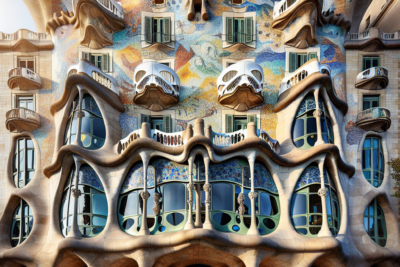
- The Historical Significance of the Sagrada Familia in Barcelona
- Exploring the Unique Architectural Features of the Sagrada Familia
- The Visionary Mind Behind the Sagrada Familia: Antoni Gaudí
- A Deep Dive into the Symbolism of the Sagrada Familia's Design
- The Ongoing Construction of the Sagrada Familia: Current Status and Future Plans
- Visiting the Sagrada Familia: Tips for Travelers and Architecture Enthusiasts
The Sagrada Familia, an iconic basilica in Barcelona, stands as a testament to the genius of architect Antoni Gaudí and his innovative vision. Its intricate facades and soaring towers blend Gothic and Art Nouveau styles, captivating millions of visitors each year. This architectural masterpiece not only reflects Gaudí's deep religious faith but also embodies the rich cultural heritage of Catalonia.
In this article, we delve into The Enchanting Origins and Architectural Marvels of the Sagrada Familia in Barcelona - A Wikipedia Guide, exploring its fascinating history and the artistic elements that make it unique. From its ambitious construction timeline to the symbolism woven into its design, the Sagrada Familia is a symbol of Barcelona’s identity and a remarkable achievement in the world of architecture.
The Historical Significance of the Sagrada Familia in Barcelona
The Sagrada Familia is not only a masterpiece of architecture but also an emblem of the historical evolution of Barcelona. Its construction began in 1882, and since then, it has witnessed significant events that shaped the city. The basilica stands as a symbol of resilience, reflecting the spirit of the Catalan people through various political and social upheavals, including the Spanish Civil War.
One of the key aspects of the Sagrada Familia's historical significance is its role as a cultural and religious landmark. It serves as a gathering place for both local communities and international visitors, fostering a sense of shared identity. Its ongoing construction highlights the dedication to preserving Gaudí's vision, making it a living project that continues to inspire generations.
- Catalan Identity: The Sagrada Familia embodies the aspirations of Catalonia, blending deep-rooted traditions with modernist ideals.
- Artistic Influence: It has influenced numerous architects and artists worldwide, emphasizing the importance of innovation in modern architecture.
- World Heritage Site: Recognized by UNESCO, it reflects the global appreciation of its artistic and historical value.
Moreover, the Sagrada Familia's intricate designs and symbolic representations provide insight into the socio-religious context of its time. Gaudí integrated elements of nature and spirituality, making it a rich tapestry of meaning. This architectural marvel not only enhances Barcelona's skyline but also serves as a reminder of the city's cultural heritage and ongoing commitment to artistic excellence.
Exploring the Unique Architectural Features of the Sagrada Familia
The Sagrada Familia is renowned for its unique architectural features that set it apart from other religious structures worldwide. One of its most striking aspects is the use of hyperboloid structures, which create a dynamic interplay of light and space within the basilica. Gaudí's innovative approach allows for a natural flow of illumination, enhancing the spiritual experience for visitors as sunlight filters through the intricately designed stained glass windows.
Another notable feature is the play of nature that permeates the design. Gaudí drew inspiration from organic forms, evident in the columns that resemble tree trunks, branching out to support the ceiling. This mimicking of nature not only reinforces the basilica's connection to the divine but also exemplifies Gaudí's commitment to integrating architectural elements with their natural surroundings.
- Distinctive Facades: The Nativity, Passion, and Glory facades each tell a unique story, showcasing different architectural styles and themes.
- Spiral Towers: The 18 towers, each representing different figures in Christianity, reach impressive heights, symbolizing a connection between heaven and earth.
- Artistic Details: From biblical scenes carved into stone to the intricate mosaics, each detail contributes to the overarching narrative of faith and devotion.
Moreover, the Sagrada Familia incorporates geometric shapes and patterns that reflect the harmony of the universe, making it a true architectural marvel. Gaudí's genius lies in his ability to fuse traditional Gothic elements with modernist innovation, resulting in a structure that not only serves as a place of worship but also as a profound statement of artistic expression and cultural identity.
The Visionary Mind Behind the Sagrada Familia: Antoni Gaudí
Antoni Gaudí, the visionary architect behind the Sagrada Familia, was a pioneer whose radical approach to design transformed the landscape of modern architecture. His work reflects a deep connection to nature and spirituality, embodying his belief that buildings should resonate with their surroundings. Gaudí's unique style integrates organic forms and shapes, making the Sagrada Familia an unparalleled masterpiece that captivates all who encounter it.
Gaudí's inspirations stemmed from various sources, including:
- Nature: He often studied natural forms and structures, allowing them to influence his architectural designs.
- Religion: His devout Catholic faith played a crucial role in shaping the symbolic elements within the basilica.
- Catalan Culture: He incorporated local traditions and motifs, ensuring that the Sagrada Familia resonated with the identity of the region.
One of Gaudí's most significant contributions to architecture is his innovative use of geometry. He employed complex shapes such as hyperboloids and parabolas, which not only enhanced the aesthetic appeal but also provided structural integrity. The integration of these forms can be seen throughout the Sagrada Familia, particularly in its soaring towers and interconnected arches.
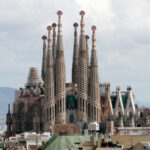 The Magnificent Sagrada Familia: A Brief Overview from Wikipedia Deutsch
The Magnificent Sagrada Familia: A Brief Overview from Wikipedia DeutschTo further understand Gaudí's remarkable approach, consider the comparison of his techniques with those of traditional architects:
| Aspect | Gaudí’s Approach | Traditional Approach |
|---|---|---|
| Design Inspiration | Nature and spirituality | Historical styles and symmetry |
| Structural Elements | Complex geometries | Simple, linear forms |
| Symbolism | Deeply embedded in the design | Often secondary to functionality |
A Deep Dive into the Symbolism of the Sagrada Familia's Design
The Sagrada Familia's design is rich in symbolism, reflecting both spiritual and natural elements that resonate deeply with its visitors. Gaudí incorporated numerous religious symbols, with each facade representing specific narratives from the Bible. For instance, the Nativity facade celebrates the birth of Jesus, showcasing intricate carvings that illustrate the joy and hope surrounding this event, while the Passion facade conveys the somber themes of Christ's suffering and sacrifice.
Moreover, the basilica's structure is infused with natural motifs, as Gaudí believed that architecture should mimic the organic forms found in nature. The columns, resembling tree trunks, reach upward to create a forest-like canopy inside the basilica. This design not only enhances the aesthetic experience but also serves to remind visitors of the divine presence in the natural world, fostering a sense of connection between faith and creation.
- Geometric Harmony: The use of geometric shapes throughout the Sagrada Familia symbolizes the harmony of the universe, suggesting that there is a divine order to creation.
- Color and Light: The stained glass windows are intentionally designed to cast colorful light inside the basilica, representing the spiritual illumination that faith brings to life.
- Symbolic Heights: The towers, each representing different saints, symbolize the aspiration of the faithful to reach towards the heavens, embodying the connection between earth and divinity.
In addition, Gaudí's integration of cultural elements into the design reinforces the Sagrada Familia's identity as a Catalonian landmark. By incorporating local traditions and symbols, the basilica serves as a reminder of the region's rich heritage, illustrating how architecture can encapsulate the spirit of a place. This multifaceted symbolism makes the Sagrada Familia not only a masterpiece of design but also a profound narrative of faith, culture, and nature intertwined.
The Ongoing Construction of the Sagrada Familia: Current Status and Future Plans
The ongoing construction of the Sagrada Familia remains a captivating endeavor that has intrigued visitors and architects alike. As of October 2023, the basilica is approximately 70% complete, with significant advancements made in various sections. The ambitious plan aims to finish the basilica by 2026, coinciding with the centenary of Antoni Gaudí's death. This target highlights not only the dedication to realizing Gaudí's vision but also the perseverance of the team working tirelessly to bring this architectural masterpiece to life.
Current efforts focus on several key areas, including:
- The Glory Facade: This main facade is being constructed to symbolize the resurrection of Jesus and aims to capture Gaudí's intricate detailing.
- Interior Finishing: The internal spaces are being meticulously developed, with attention to light and acoustics to enhance the spiritual experience.
- Towers and Structural Integrity: The construction of the towers continues, which will eventually reach an impressive height of 172.5 meters, making the Sagrada Familia one of the tallest churches in the world.
Looking ahead, future plans include integrating cutting-edge technology in the building process. Digital tools are being utilized to create precise models, ensuring that every aspect aligns with Gaudí's original designs. Additionally, sustainable practices are being prioritized, with the intention of reducing the environmental impact of the construction. This forward-thinking approach not only honors the past but also prepares the Sagrada Familia for its role in the future.
As the project progresses, the Sagrada Familia continues to attract millions of visitors, who come to witness the evolving masterpiece. The ongoing construction serves as a reminder of the collaborative effort to preserve Gaudí's legacy while adapting to contemporary architectural practices. This blend of tradition and innovation ensures that the Sagrada Familia will remain a significant symbol of Barcelona's cultural and architectural heritage for generations to come.
Visiting the Sagrada Familia: Tips for Travelers and Architecture Enthusiasts
Visiting the Sagrada Familia is a must for travelers and architecture enthusiasts alike. To make the most of your experience, consider planning your visit during off-peak hours, such as early mornings or late afternoons. This will allow you to appreciate the intricate details of Gaudí's masterpiece without the crowds. Additionally, purchasing tickets online in advance can save you time and ensure access to specific time slots, enhancing your overall experience.
For architecture lovers, a guided tour can provide invaluable insights into the design and symbolism of the Sagrada Familia. Knowledgeable guides can explain the significance of various elements, such as the hyperboloid structures and natural motifs, which make this basilica unique. You can also take advantage of audio guides available in multiple languages, offering in-depth information at your own pace.
- Photography Tips: Bring a good camera to capture the stunning facades and interior details. Early morning light provides excellent conditions for photography.
- Dress Code: As a place of worship, it's important to dress modestly. Ensure that shoulders and knees are covered to respect the sacred nature of the site.
- Accessibility: The Sagrada Familia is equipped with facilities for visitors with mobility challenges. Check the official website for specific accessibility options.
Finally, don't forget to explore the surrounding area. The Sagrada Familia is located near several parks and local eateries, making it an ideal spot to unwind after your visit. Consider taking a stroll through the nearby Parc de la Ciutadella, or enjoy a meal at one of the local tapas bars to immerse yourself in the vibrant culture of Barcelona.
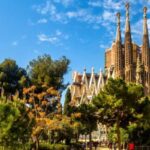 Sagrada Familia Barcelona: Your Ultimate Guide
Sagrada Familia Barcelona: Your Ultimate GuideIf you want to know other articles similar to The Enchanting Origins and Architectural Marvels of the Sagrada Familia in Barcelona - A Wikipedia Guide you can visit the category WHERE YOU CAN GO.
Deja una respuesta

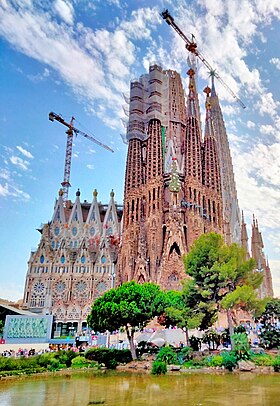
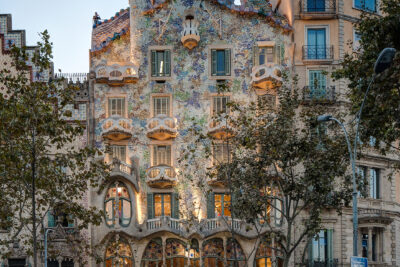
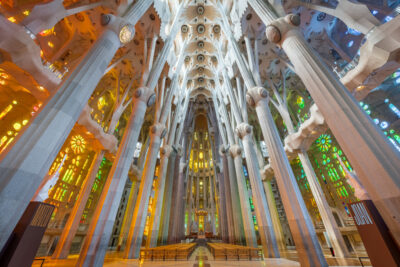
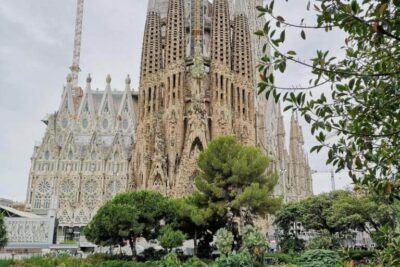
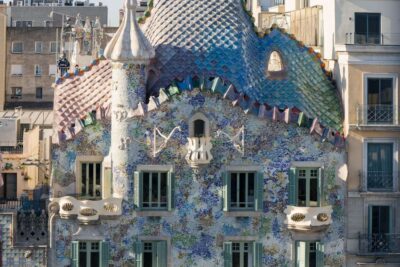
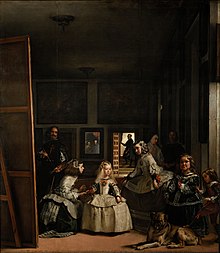
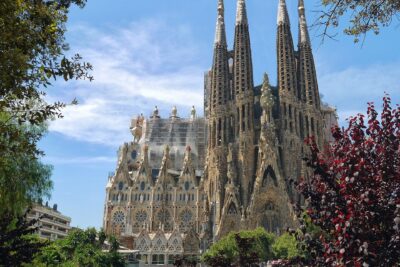
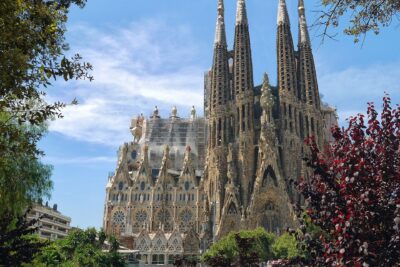
Read more!